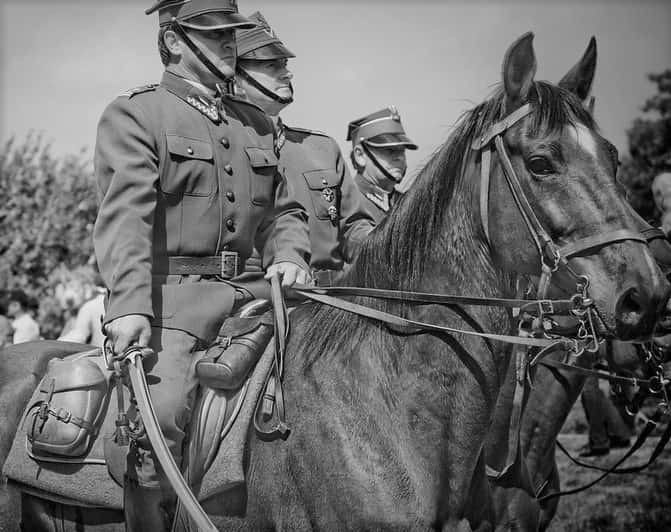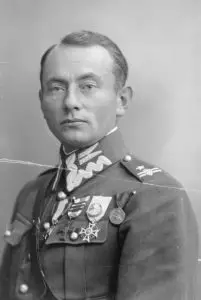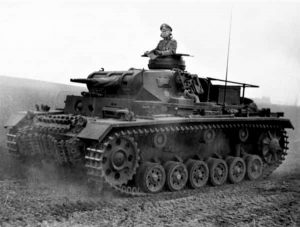Did the Polish cavalry attack German tanks at the beginning of WW2?
Was the Polish army so outdated, unprepared, and misinformed?

Polish Cavalry WW2.
World War II started on September 1, 1939, at 4.40 am. The German Airforce, Luftwaffe, attacked the city of Wieluń, southwest of Warsaw, Poland. Five minutes later the German Battleship, Schleswig-Holstein, started firing at Westerplatte in Gdansk. Immediately after that, the Germans initiated a full-scale invasion. 1,5 million soldiers matched across the border together with 2859 tanks, 1107 airplanes, and 5805 artillery pieces.
The Polish had a reasonably big army of 700.000 men. But just like every other European country in the late 30s, they were poorly equipped. Europe was not prepared for the German aggression in 1939. As an example, the US army could mobilize 187.000 men at the beginning of the war.
Still, the Polish army inflicted strategic losses on the German army. And they had anti-tank guns that could penetrate the armor of the lightweight German Panzer tanks. The Polish airforce, though out of date, and outnumbered, still managed to add large losses to the Luftwaffe.
As if fighting the German Wehrmacht wasn’t enough…
When the Soviet Union attacked Poland from the east, on September 17, the battle was definitely lost. The Polish commander Edward Rydz-Igmigły ordered his troops to not fight the Soviets but to retreat to Hungary and Romania. The day after the Government left the country. The resistance continued though, and it took the Germans considerable force to defeat the defenses of Warsaw. The German-Polish war didn’t end until October 5, after the battle of Kock.

Photo: Narcyz Witczak Witaczyński
Poland was attacked on both sides by powerful neighbors. Then they were betrayed by the allied forces in Europe who had promised to assist them if Germany would attack. Great Britain and France did not honor that commitment.
Krojanty Cavalry charge
On the first day of the war, September 1, outside the village of Krojanty southwest of Gdansk, the 18th regiment of the Pomorska Cavalry Brigade spotted a battalion of german foot-soldiers. The Polish commander, Colonel Kazimierz Mastalerz, decided to charge the Germans with a surprise attack.
At 19 pm, Squadron-commander Eugeniusz Świeściak led two cavalry squadrons, about 250 soldiers, in an attack with a saber charge. The attack was successful and the Germans were overrun and defeated.
Immediately after that, a German motorized infantry unit closed in from the nearby road and attacked the Poles. These were not Tanks but heavy machine gun vehicles, and they swiftly changed the outcome.
The Poles were exposed and tried to take refuge behind a nearby small hill. About one-third of the Polish soldiers died, including the two commanders.
How it became a news story all over the world.

Later German correspondents together with two Italian journalists arrived. At that point, German Panzer Tanks were on site and the journalists got the impression that the Polish cavalry had charged against the tanks. One of them, Indro Montanelli, wrote an article describing the heroic Polish horse-riders attacking the impenetrable German tanks with sabers. The story, with the photos of the dead soldiers, horses, sabers, and tank tracks was frequently used in German and Soviet propaganda.
This myth about the Polish cavalry attacking German tanks lingered on and, incredible as it may seem, is still told today in all sorts of literature in various parts of the world.
The truth is that the Polish army took the very first blow alone, and they had to single-handedly fight both Germany and the Soviet Union without any help from anybody. The exiled Polish army took part in the defense of France, the battle of Britain and the battle of the Atlantic, the invasion of Italy, and the counter-offensive in Normandie, Operation Overlord. In Poland, the Polish put up resistance during the full duration of the war and thus pinning down a significant amount of german soldiers that could have been used elsewhere.
Ben MacIntyre, Historian, and correspondent for The Times:
“The Polish contribution to Allied victory in the Second World War was extraordinary, perhaps even decisive, but for many years it was disgracefully played down, obscured by the politics of the Cold War.”
Conclusion
No, the Polish cavalry never attacked German tanks with sabers. It would have been utterly foolish.
Sources: